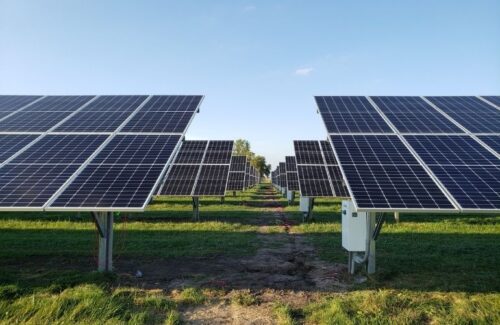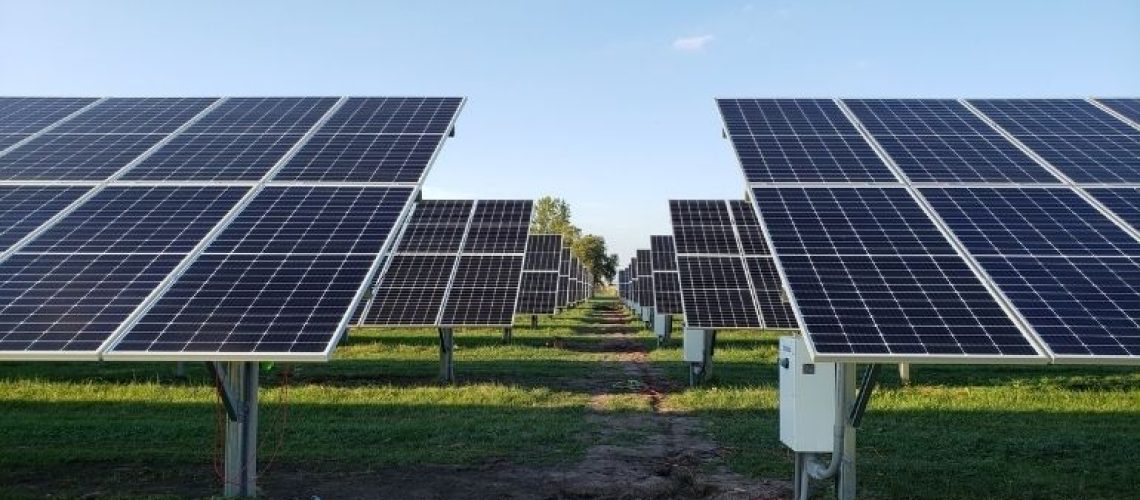Renewable energy sources provided 97.4% of new domestic electrical generating capacity and 24.4% of actual generation during the first quarter of 2022, according to a review of FERC and EIA data by the SUN DAY Campaign.
According to FERC data, utility-scale solar and wind facilities added 1,639 MW and 4,114 MW, respectively. Hydropower added another 5 MW. Natural gas contributed the remaining 154 MW of the the 5,912 MW in new capacity reported in the first three months of the year.

Credit: Blackburn and IL-Solar
In March alone, wind (1,418 MW) and solar (240 MW) accounted for 100% of the new capacity brought online.
Renewables now provide more than one-quarter (26.4%) of total U.S. available installed generating capacity — a share significantly greater than that of coal (18.2%) and more than three-times that of nuclear power (8.2%). Only natural gas (43.9%) provides a greater share of capacity.
In addition, actual electrical generation by renewable energy sources set new records for both the first quarter and just the month of March.
According to EIA data, renewable energy sources (including residential solar) increased their electrical output in Q1 by 18.3% compared to the same period a year earlier, and provided 24.4% of total U.S. electrical generation. In March alone, renewables hit 27.8%.
For the quarter, electrical generation by solar sources grew by 31.8% while wind increased by 22.9%. Renewables comfortably out-produced both coal and nuclear power by 16.4% and 30.3%, respectively.
FERC data indicate that the share of generating capacity from solar and wind is on track to increase significantly over the next three years. FERC notes that there may be as much as 183,697 MW of new solar capacity in the pipeline with 60,288 MW classified as “high probability” additions and no offsetting “retirements.” The “high probability” additions alone would nearly double utility-scale solar’s current installed capacity of 72,070 MW while successful completion of all projects in the pipeline would more than triple it.
In addition, new wind capacity by March 2025 could total 72,341 MW with 18,339 MW being “high probability” and only 151 MW of retirements expected. Thus, installed wind capacity could grow by at least 13% and possibly by much more.
“High probability” generation capacity additions for utility-scale solar and wind combined, minus anticipated retirements, reflect a projected net increase of 78,416 MW over the next three years, or almost 2,200 MW per month. That figure does not include new distributed, small-scale solar capacity or additions by hydropower, geothermal, and biomass. By comparison, net growth for natural gas will be only 10,778 MW. Thus, solar and wind together are forecast to provide more than seven-times as much new net generating capacity as natural gas by March 2025, not to mention almost 360-times as much net new capacity as nuclear power (projected to add only 218 MW). Coal is forecast to drop by 30,241 MW.
If just FERC’s latest “high probability” projections materialize, by March 2025, renewable energy sources should provide nearly one-third (31.31%) of the nation’s total available installed generating capacity with utility-scale solar and wind accounting for 10.09% and 12.00%, respectively.
“2022 has begun as a strong year for solar and wind notwithstanding headwinds such as disruptions in global supply chains, trade disputes, and access to transmission,” noted the SUN DAY Campaign’s executive director Ken Bossong. “Together with other renewable energy sources, they seem poised to become the fastest growing sources of both new capacity and actual generation in 2022.”
News item from SUN DAY
<!–
–>



